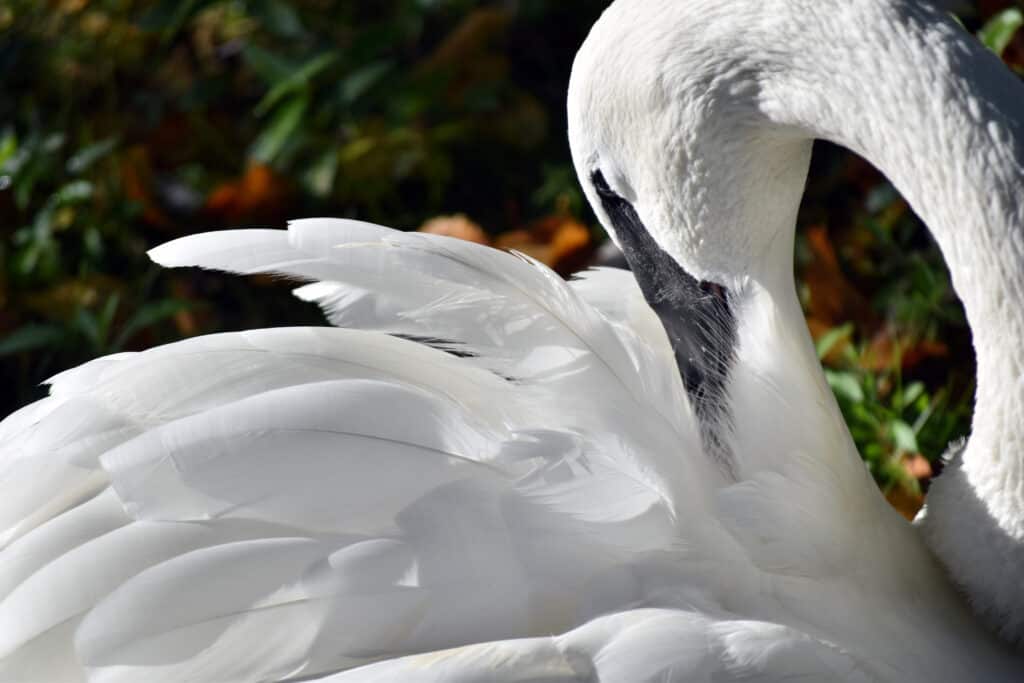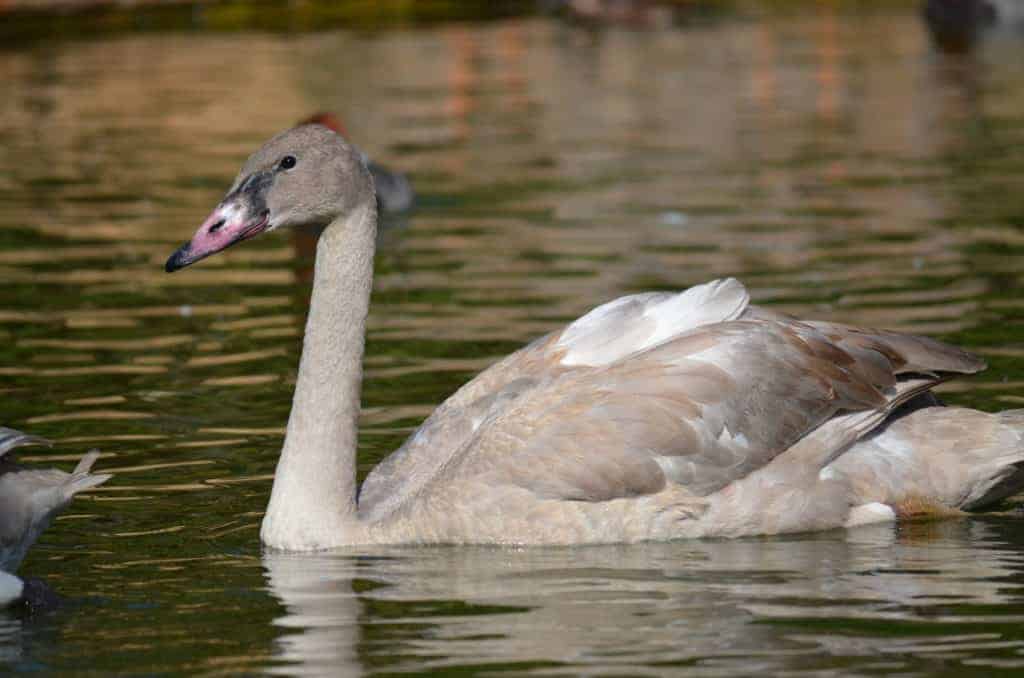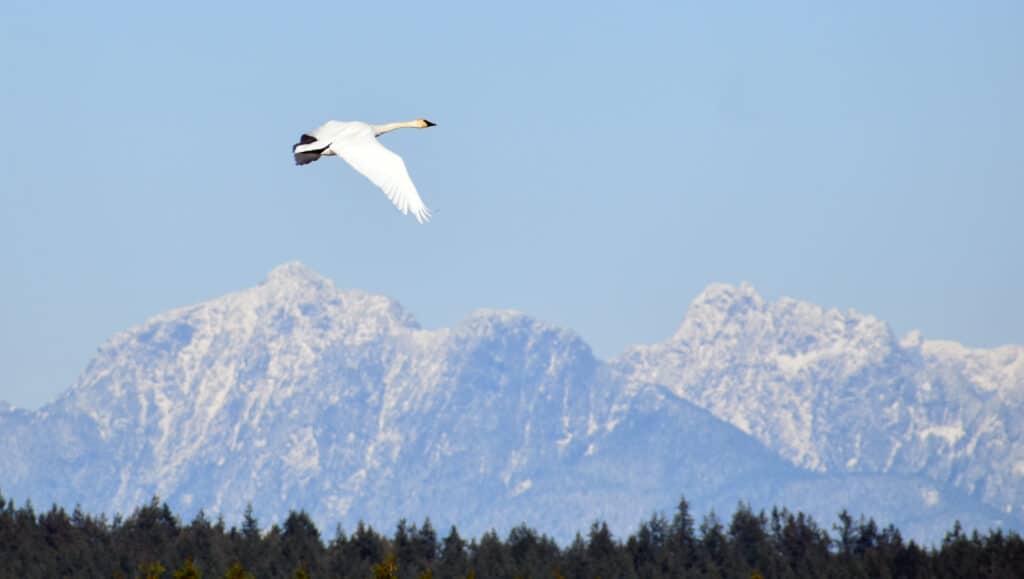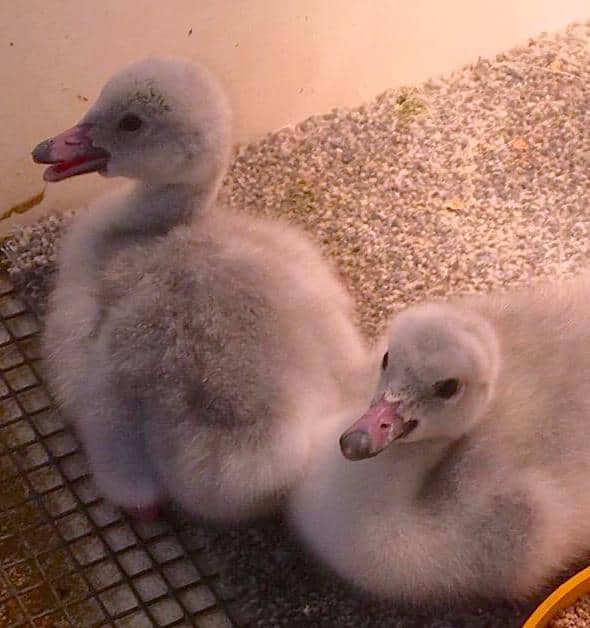Trumpeter Swan



Cygnus buccinator
These North American natives are the largest of their kind in the world and one of the heaviest flying birds; weighing up to 30 pounds they are held aloft on a wingspan of eight feet. Most of the world population breeds between Alaska and W Canada.
Trumpeter Swans once nested over most of North America and some estimates placed their numbers, historically, at more than 100,000. However, by the late 19th Century, they were almost hunted out of existence; European settlers harvested them for their skin and feathers.
Happily, through a successful international conservation effort, the population of Trumpeter Swans has shown sustained growth over the past thirty-year period. The most serious threat to their continued well-being is loss of habitat from expanding human activity.

Like most swans, the young go through a year of off-white plumage. The complete moult in their second summer is when they turn fully white.
There is a stable leucitic morph, mostly in Yellowstone National Park (Wyoming, USA) and a few in Minnesota, USA. The bill in this form is a pale pink and legs yellowish, rather than the blackish of the nominate race. The downies of this race are much lighter.
Trumpeter Swans take at least 3 years to reach maturity, it is usual for pairs to start breeding at 4 or 5. The nest will be built up from surrounding vegetation at the edge of the water and will usually end up with a moat around it. Clutch size is 4-7 eggs and incubation is 33-37 days.
FURTHER READING
Canadian Wildlife Federation, Trumpeter Swan
The Trumpeter Swan Society What kind of Swan?
Share this page